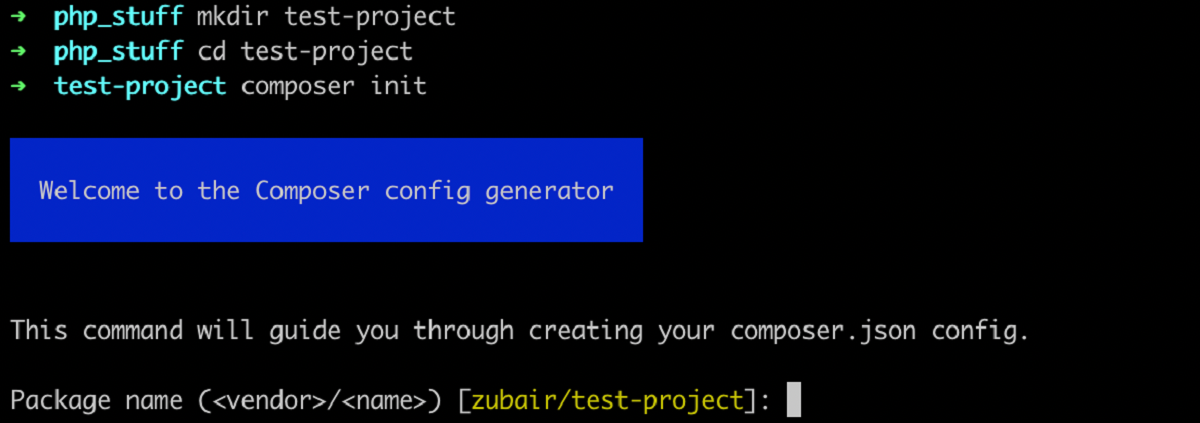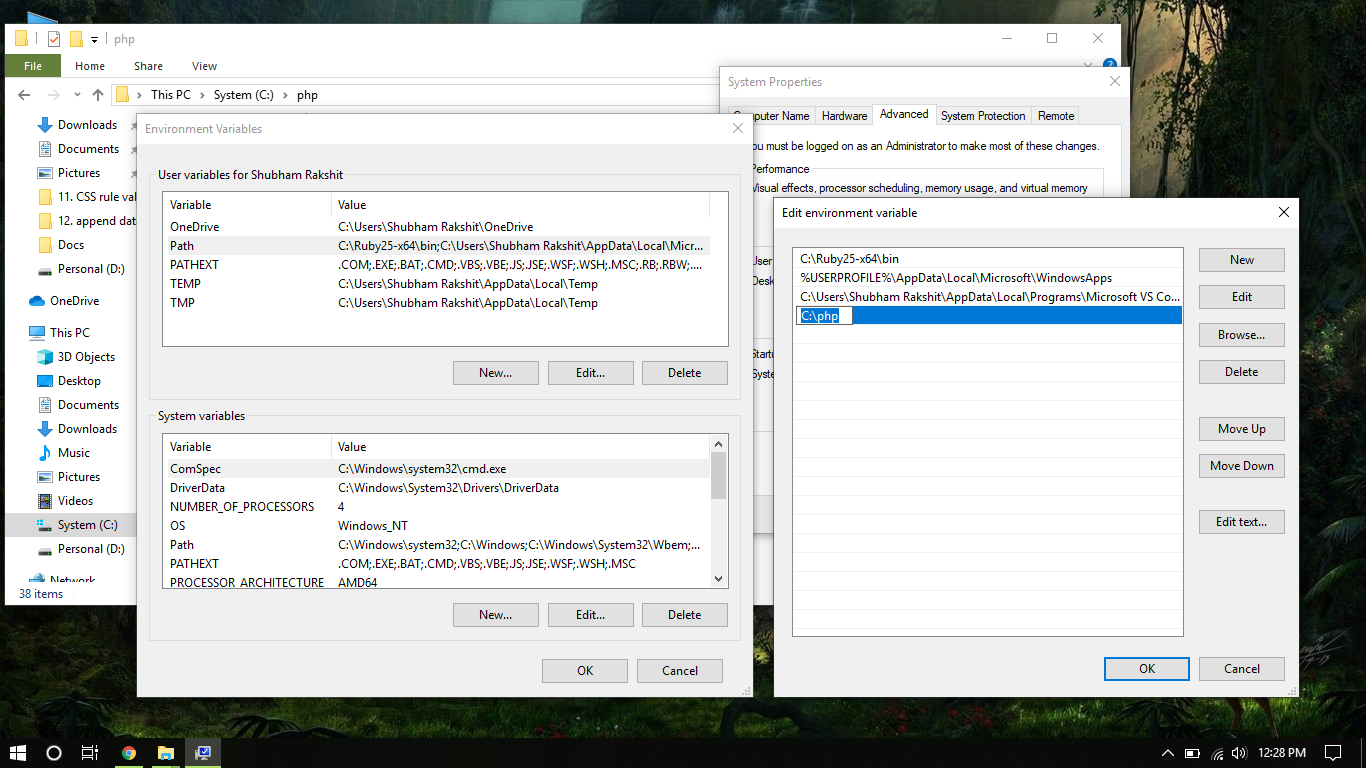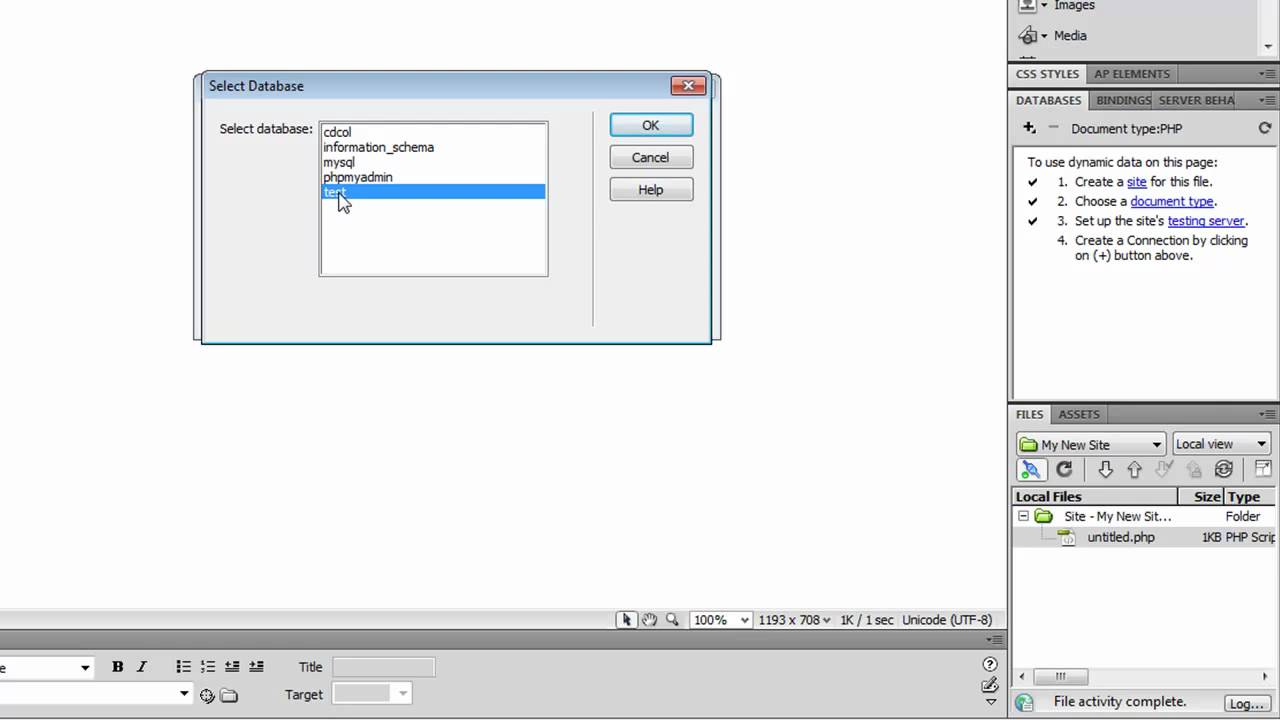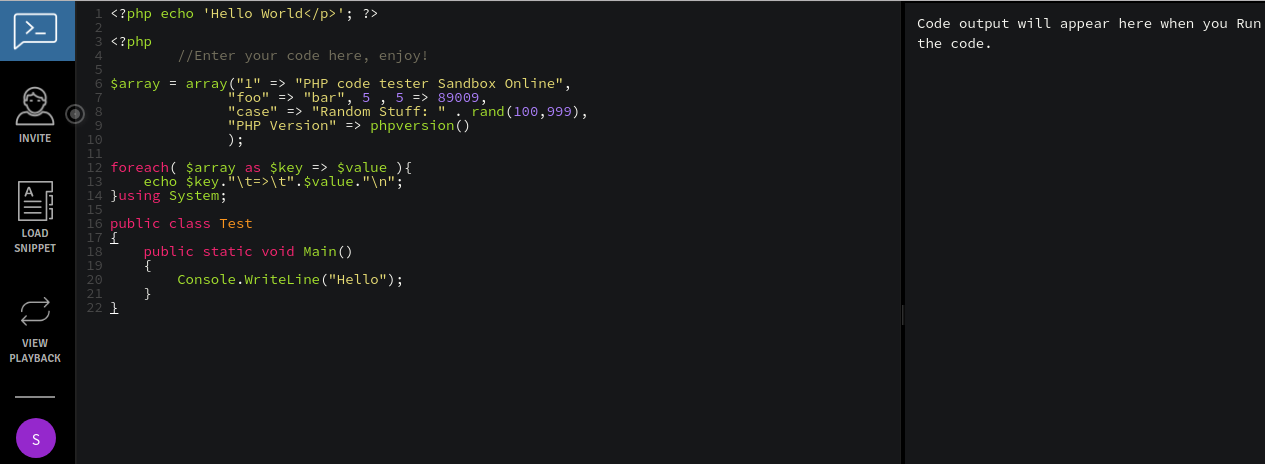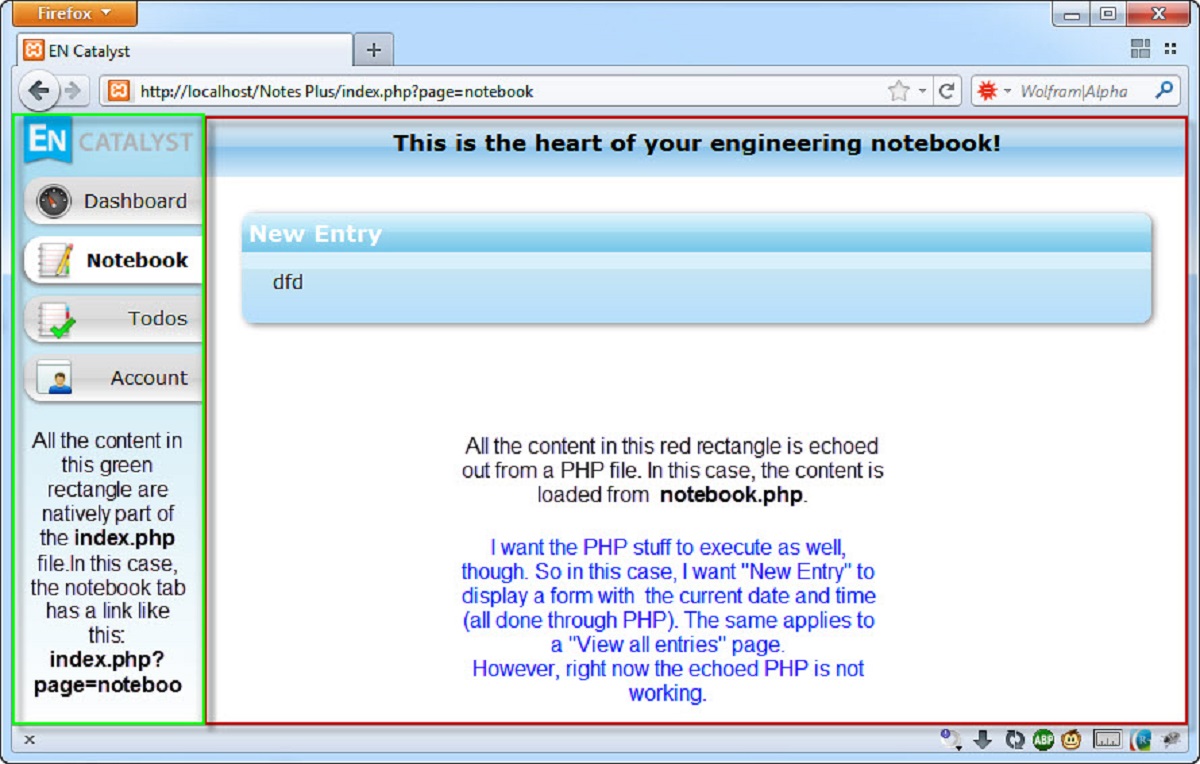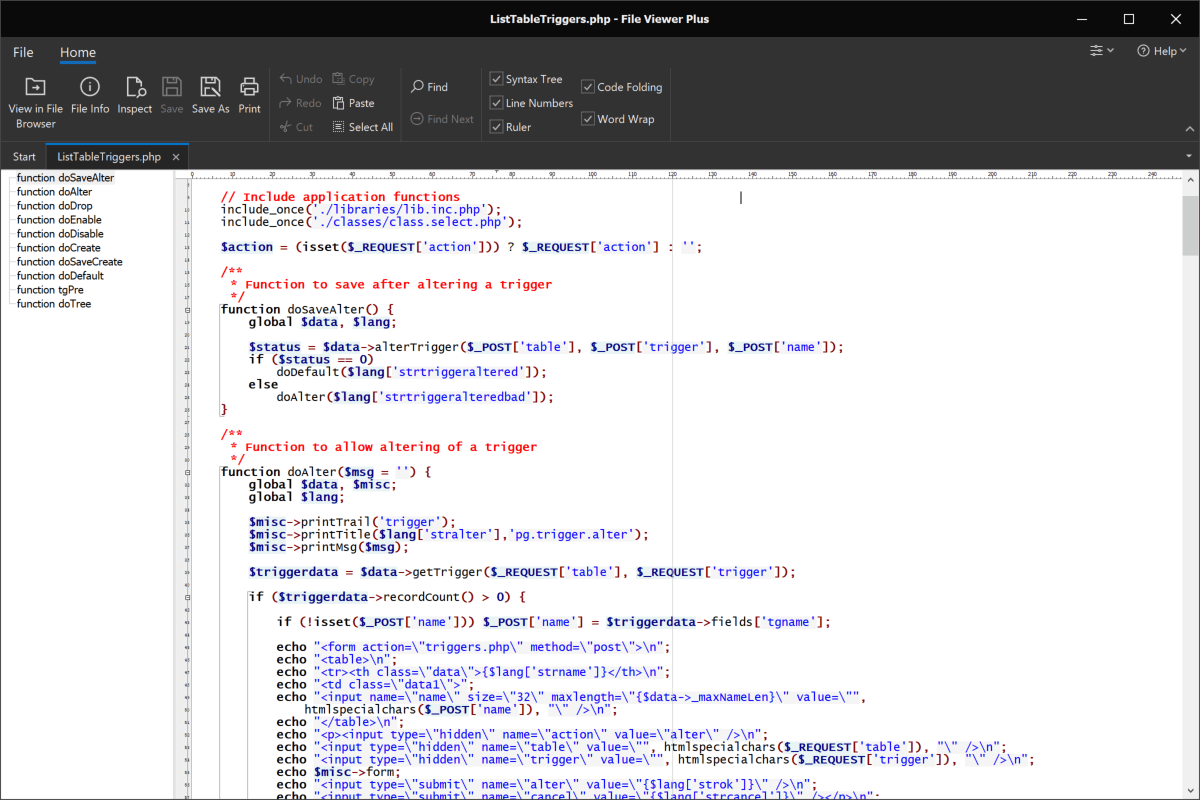Overview
Testing PHP code is a crucial part of the development process, as it ensures that the code is functioning correctly and meets the desired requirements. By thoroughly testing our PHP code, we can catch any bugs or errors before they reach production, resulting in more robust and reliable applications. In this article, we will explore various aspects of testing PHP code, from setting up a testing environment to implementing best practices for efficient test-driven development.
To begin testing PHP code, it is essential to establish a proper testing environment. This includes installing and configuring a web server, such as Apache or Nginx, along with PHP and a database management system, if necessary. By simulating the production environment, we can accurately assess how the code performs and identify any compatibility issues.
There are different types of testing that can be implemented, each serving a specific purpose. Unit testing involves testing individual units or functions of code in isolation to ensure they work correctly. Integration testing examines how different components interact with each other and detects any compatibility or communication issues between them. Functional testing assesses the behavior of the application as a whole, checking if it meets the expected functionality requirements.
To gauge the effectiveness of our tests, we can measure test coverage. Test coverage provides insights into the percentage of code covered by our tests, ensuring that our tests are comprehensive and leaving no critical parts undiscovered.
Automating tests is a vital aspect of efficient testing. By automating our tests, we can save time and effort in executing them repeatedly. Tools like PHPUnit and Behat help automate the testing process and provide features for writing and running tests effectively.
To ensure a seamless development workflow, continuous integration and continuous testing play a significant role. CI/CD tools such as Jenkins or Travis CI automatically build, test, and deploy our code, promoting faster and more reliable development cycles.
Test-driven development is a methodology that advocates writing tests before implementing the corresponding code. By following this approach, we can drive the development process based on the expected behavior of the code, resulting in more maintainable and testable code.
In the testing phase, effective debugging and error handling are essential. Proper handling of errors and exceptions ensures better error reporting and assists in identifying and fixing issues quickly.
To wrap up, it is crucial to follow best practices when it comes to testing PHP code. This includes writing clear and concise test cases, using proper assertions, organizing tests into logical categories, and regularly reviewing and updating tests as the codebase evolves.
Setting Up a Testing Environment
Before we can start testing PHP code, it is important to set up a proper testing environment that closely resembles the production environment. This ensures that the tests accurately reflect the behavior of the code in a real-world scenario. Here are the steps to set up a testing environment for PHP code.
1. Install a Web Server: Begin by installing a web server that supports PHP, such as Apache or Nginx. This will serve as the platform to run and test your PHP applications. Make sure to configure the web server correctly for PHP execution.
2. Install PHP: Download and install the PHP runtime on your system. There are various PHP versions available, so choose the one that matches your project requirements. Ensure that PHP is properly configured with the web server, so it can process PHP scripts.
3. Set Up a Database: If your PHP application interacts with a database, you need to install and configure a database management system, such as MySQL or PostgreSQL. Create a test database that mimics the structure of the production database to ensure accurate testing.
4. Use a Testing Framework: Utilize a testing framework like PHPUnit to write and execute your tests. Testing frameworks provide a set of tools and utilities to simplify the testing process and generate meaningful test reports. PHPUnit is widely used in the PHP community and supports various testing techniques, such as unit testing and integration testing.
5. Create a Test Environment: It is recommended to create a separate test environment that mimics the production environment as closely as possible. This includes setting up a separate database for testing purposes and configuring the necessary server environment variables to match the production settings. This ensures that your tests run in an isolated environment without affecting the live application.
6. Install Dependencies: If your PHP project relies on external libraries or dependencies, make sure to install them in your testing environment. Use a package manager like Composer to manage and install the required packages and libraries. Keeping the dependencies consistent across the development and testing environments is crucial for achieving reliable and reproducible tests.
7. Write Test Cases: Once your testing environment is set up, start writing test cases for your PHP code. Write tests that cover different scenarios and edge cases, ensuring comprehensive coverage. Test cases should check for expected outputs, handle exceptions, and validate the behavior of the code against the desired requirements.
By following these steps, you can establish a robust testing environment for testing your PHP code. Remember to keep the testing environment separate from the production environment to maintain the integrity of your applications and ensure accurate testing results.
Unit Testing
Unit testing is a fundamental aspect of testing PHP code. It involves testing individual units or components of code in isolation to ensure their correctness and functionality. The goal of unit testing is to verify that each unit of code, such as a function or method, behaves as expected and produces the expected output.
To perform unit testing in PHP, developers often use a testing framework like PHPUnit. PHPUnit provides a rich set of assertion methods that allow you to define test cases and compare actual results with expected results. With PHPUnit, you can test PHP code at a granular level, focusing on verifying the behavior of individual units of code.
When writing unit tests, it is important to cover different scenarios and edge cases to ensure comprehensive coverage. You can test different inputs, including valid and invalid data, to validate the behavior of the code under different conditions. By thoroughly testing each unit, you can identify any bugs or issues early in the development process, which leads to more robust and reliable code.
One popular technique used in unit testing is test-driven development (TDD). With TDD, developers write tests before implementing the corresponding code. This approach helps guide the development process and ensures that code is written to meet expected behavior. TDD promotes better code design and maintainability, as writing tests first forces developers to think about the requirements and behavior of the code before writing any actual implementation.
When writing unit tests, it’s important to follow best practices to ensure effective and efficient testing. Here are some best practices for unit testing in PHP:
- Keep test cases small and focused: Each test case should focus on testing a specific aspect of code behavior.
- Use descriptive and meaningful test method names: Clear and descriptive test method names make it easier to understand the purpose and intention of each test case.
- Mock external dependencies: In unit testing, it’s common to mock external dependencies, such as databases or APIs, to isolate the code under test.
- Regularly refactor and update tests: As the codebase evolves, make sure to update and refactor tests to reflect any changes and maintain test reliability.
- Run tests frequently and integrate them into your development workflow: Running tests frequently helps catch issues early. Integrate unit tests into your continuous integration (CI) system to automatically run tests on code changes.
By incorporating unit testing into your PHP development process, you can ensure that your code is reliable, maintainable, and free from bugs. Properly tested code boosts confidence in the functionality of your applications and provides a solid foundation for further development and enhancements.
Integration Testing
Integration testing is a crucial phase in the testing process that focuses on testing how different components of an application interact with each other. It aims to identify any compatibility or communication issues between these components and ensures that they work together seamlessly as expected. Integration testing in PHP helps validate the integration of various modules, libraries, APIs, and databases within a system.
Unlike unit testing, which tests individual units of code in isolation, integration testing evaluates the behavior and functionality of these units when combined together. It ensures that the integration points between different components work correctly and that the system functions properly as a whole.
To perform integration testing in PHP, developers can utilize testing frameworks, such as PHPUnit, that support integration testing features. These frameworks provide tools and methods to simulate the interaction between different components, making it easier to write and execute integration tests.
When conducting integration testing, it’s important to consider the various scenarios and edge cases that may arise during the integration process. For example, you may want to check how the application handles data exchanges between different modules or how errors are handled when there is a failure in communication.
One common technique used in integration testing is the creation of mock objects or stubs. These simulate the behavior of external components or services that are not readily available for testing. Mock objects allow you to control and verify the interactions between components without relying on the actual implementation of the external dependencies.
To ensure effective integration testing, it’s essential to follow best practices:
- Identify key integration points: Determine the critical areas of integration within your system and focus your testing efforts on these points.
- Design clear test cases: Clearly define the expected behavior and outcomes of the integration tests to ensure consistency and reproducibility.
- Use appropriate testing techniques: Employ techniques like top-down or bottom-up integration testing depending on the complexity of your system.
- Test boundaries and failure scenarios: Verify how the system handles edge cases and error conditions during integration to ensure robustness and error resilience.
- Automate integration tests: Automate the execution of integration tests to streamline the testing process and enable frequent testing.
By performing thorough integration testing, you can detect and resolve compatibility issues, communication problems, and inconsistencies in your PHP application. It helps ensure a smooth and seamless interaction between different components, leading to a more stable and reliable system overall.
Functional Testing
Functional testing is a critical aspect of PHP code testing that focuses on verifying the behavior and functionality of an application as a whole. It tests whether the application meets the desired functional requirements and performs its intended tasks correctly. Unlike unit testing or integration testing, which focus on specific code units or interactions between components, functional testing evaluates the application’s overall functionality from an end-user perspective.
Functional testing aims to ensure that the PHP application behaves as expected, performs its intended tasks accurately, and handles various scenarios effectively. It typically involves testing different user flows, inputting different data sets, and verifying the expected outcomes. Functional testing verifies that all the features and functionalities of the application are working as intended and enables developers to uncover any bugs, errors, or inconsistencies.
When conducting functional testing in PHP, developers typically use automated testing frameworks like PHPUnit or third-party tools like Selenium. These frameworks allow developers to simulate user interactions, automate test cases, and assert the expected behavior of the application. They provide features to navigate through different pages, fill in forms, click buttons, and validate the output or response.
To perform effective functional testing, it is essential to:
- Identify critical user flows: Determine the primary functionalities and user actions that need to be tested, and concentrate on those areas.
- Create comprehensive test cases: Develop test cases that cover various scenarios, including positive and negative test cases, edge cases, and boundary conditions.
- Verify output and response: Check that the application produces the expected output or response for different inputs.
- Validate user input handling: Ensure that the application accurately handles user inputs, such as form submissions or data validation.
- Reproduce bugs and issues: When encountering a bug or issue, create a test case that reproduces the error to aid in debugging and resolution.
- Automate functional tests: Automate the execution of functional tests to save time and effort, allowing for frequent and efficient testing.
Functional testing provides confidence that the PHP application functions correctly and meets the desired requirements. By thoroughly testing the application’s features and user flows, developers can deliver more reliable and user-friendly applications that provide a positive user experience.
Test Coverage
Test coverage measures the extent to which your tests are exercising different parts of your PHP code. It provides insights into the percentage of code lines, functions, or branches that are covered by your tests. Having a high test coverage ensures that your tests are comprehensive and leave no critical parts of the codebase untested.
Test coverage is essential because it allows you to assess the effectiveness of your tests and identify any gaps in your test suite. By analyzing the coverage report, you can determine which areas of your codebase have been tested and which ones need additional testing. Increasing the test coverage helps mitigate the risk of undetected bugs and provides confidence in the stability of your applications.
To measure test coverage in PHP, you can use tools like PHPUnit’s code coverage feature or third-party tools like Xdebug. These tools track the execution of your tests and generate coverage reports that highlight the parts of your code that have and have not been exercised by the tests.
There are different types of test coverage metrics that can be measured, such as line coverage, function coverage, and branch coverage:
- Line coverage: Line coverage measures the percentage of lines of code that are executed by your tests. It indicates how much of your code has been exercised during testing.
- Function coverage: Function coverage looks at the percentage of functions or methods that have been invoked by your tests. It helps ensure that the individual units of code are tested.
- Branch coverage: Branch coverage evaluates the paths taken within conditional statements, such as if-else or switch statements. It ensures that different branches of the code have been tested.
The goal of test coverage is not to achieve 100% coverage in all metrics, but rather to have meaningful coverage that adequately tests critical parts of the codebase. It is important to strike a balance between testing effectiveness and resource constraints.
To improve test coverage, consider the following suggestions:
- Write additional tests for uncovered code: Identify the areas of your codebase that lack coverage and create targeted tests to exercise those parts.
- Refactor code for testability: If certain code units are difficult to test, refactor them to improve testability. This may involve breaking down large functions into smaller, testable units or applying dependency injection principles.
- Update tests as the codebase evolves: Regularly review and update your tests to reflect any changes or additions to your codebase. This ensures that the tests remain relevant and cover the modified parts of the code.
- Analyze coverage reports: Analyze the coverage reports to gain insights into the effectiveness and gaps in your tests. Use the reports as a guide to focus your testing efforts where they are most needed.
By striving for adequate test coverage, you can improve the reliability and stability of your PHP applications. It helps catch bugs early in the development process and provides the assurance that your code is well-tested and ready for production use.
Test Automation
Test automation plays a crucial role in efficiently and effectively testing PHP code. It involves automating the execution of tests to save time, effort, and resources, enabling faster and more reliable testing cycles. Automation allows you to run tests repeatedly with consistent results, reducing the likelihood of human error and ensuring thorough testing coverage.
In PHP, there are several tools and frameworks available for test automation, such as PHPUnit, Codeception, and Behat. These tools provide features for writing and executing automated tests, as well as generating informative test reports. They offer functionalities like test scaffolding, assertion methods, and mocking capabilities that simplify the process of automating PHP tests.
There are numerous benefits to test automation in PHP development:
- Improved Efficiency: Automating tests eliminates the need for manual execution, saving time and effort. It enables you to run a large number of test cases in a shorter duration, allowing for faster feedback and quicker identification of issues.
- Consistent and Repeatable Tests: Automated tests provide a consistent and repeatable testing process, reducing the likelihood of human error. The same tests can be executed repeatedly, ensuring consistent results and facilitating regression testing.
- Increased Test Coverage: With automation, you can easily and frequently run a comprehensive suite of tests, increasing test coverage and identifying potential bugs or issues in a timely manner.
- Better Resource Utilization: Automated tests can be scheduled to run during off-peak hours, maximizing resource utilization. Test environments can also be easily set up and torn down, optimizing resource allocation and reducing cost.
- Integration with Continuous Integration (CI) Systems: Test automation seamlessly integrates with CI systems, ensuring that tests are automatically triggered on code changes, providing immediate feedback on the quality and stability of the PHP codebase.
To effectively implement test automation in PHP, consider the following best practices:
- Write maintainable and modular test code: Ensure that your automated tests are well-structured, maintainable, and modular, making it easier to update and enhance them as the codebase evolves.
- Use version control for tests: Keep the test code under version control, allowing for collaboration, code review, and easily reverting changes if necessary.
- Perform continuous maintenance: Regularly review and update your test suite to keep it relevant and reliable. As the codebase changes, update the tests accordingly to avoid false negatives or outdated assertions.
- Leverage test data management: Use techniques like test data factories or fixtures to generate consistent and realistic test data, facilitating more accurate and exhaustive testing.
- Integrate with reporting and analysis tools: Utilize reporting and analysis tools provided by testing frameworks or third-party tools to evaluate test results, identify trends or patterns, and make data-driven decisions.
By automating tests, PHP developers can streamline the testing process, increase productivity, and deliver more robust and stable applications. Test automation is an essential practice to adopt for organizations looking to improve the quality and reliability of their PHP code.
Continuous Integration and Continuous Testing
Continuous Integration (CI) and Continuous Testing are vital practices in modern software development, including PHP projects. They involve the automated building, testing, and integration of code changes into a shared repository, ensuring the development process is streamlined and efficient while maintaining code quality.
Continuous Integration focuses on merging code changes from multiple developers frequently. With each code commit, an automated build process is triggered to compile the code and run a predetermined set of tests. This helps identify integration issues and conflicts early, ensuring that the codebase remains stable and functional.
Continuous Testing complements Continuous Integration by automating the execution of tests as part of the CI pipeline. This enables the early detection of faults and defects, aiming to uncover issues as soon as possible before they impact subsequent development stages or production environments.
In a Continuous Integration and Continuous Testing environment, developers commit changes to a version control system, triggering the CI server to build and test the codebase automatically. The CI server compiles the code, deploys the application into a test environment, and runs a suite of tests, including unit, integration, and functional tests. Reports are generated to provide feedback on the build status and test results.
Some key benefits of Continuous Integration and Continuous Testing include:
- Early Bug Detection: By running tests continuously, any defects or bugs are uncovered early in the development process when they are easier and quicker to fix.
- Rapid Feedback Loop: Continuous Testing provides immediate feedback on code changes, helping developers identify issues and receive feedback promptly. This leads to faster iteration and quicker delivery of bug-free code.
- Increased Code Quality: The regular execution of tests ensures that code quality is maintained, and any regressions are caught early. This results in higher-quality software with fewer defects.
- Improved Collaboration: Continuous Integration ensures that the entire development team is working with the latest codebase and can collaborate more effectively on integration issues.
- Reduced Merge Conflicts: Frequent integration minimizes the likelihood of merge conflicts, making it easier to resolve conflicts and keep the codebase in a consistently stable state.
To implement Continuous Integration and Continuous Testing effectively in PHP projects, consider the following best practices:
- Automate the build and test process using CI/CD tools like Jenkins, Travis CI, or GitLab CI/CD.
- Write a comprehensive suite of automated tests, including unit, integration, and functional tests.
- Run the tests in isolated test environments that closely resemble the production environment.
- Monitor and analyze test results using integrated reporting tools to track code coverage and identify areas that need improvement.
- Perform continuous maintenance on the test suite to update tests as the codebase evolves and new features are added.
By adopting Continuous Integration and Continuous Testing practices in PHP development, teams can ensure faster delivery of high-quality software, reduced risks, and improved collaboration, leading to more successful and efficient software development projects.
Test-Driven Development
Test-Driven Development (TDD) is a software development approach that advocates writing tests before implementing the corresponding code. In TDD, the development process is driven by the expected behavior and requirements of the code. It involves writing a failing test case, implementing the code to make the test pass, and continuously iterating this process to ensure that the codebase remains reliable and well-tested.
TDD follows a cycle known as “red, green, refactor”:
- Red: Write a test case that captures the expected behavior of the code. This test should initially fail, as the code to fulfill the requirements has not been implemented yet.
- Green: Write the minimum amount of code necessary to pass the test. Keep the focus on the simplest solution that satisfies the requirements.
- Refactor: Once the test passes, refactor the code to improve its design, readability, and maintainability. Ensure that the tests continue to pass after refactoring.
Applying TDD in PHP development offers several benefits:
- Improved Code Quality: Writing tests before code leads to well-structured and decoupled code. TDD encourages developers to think about the code’s design and make it more maintainable and testable.
- Clearer Requirements: TDD forces developers to define the expected behavior of the code upfront, resulting in clearer requirements and reducing ambiguity.
- Early Bug Detection: With TDD, bugs are often identified early in the development process, making them easier to fix and preventing future regressions.
- Regression Testing: The comprehensive test suite developed using TDD ensures that existing functionality remains intact as the codebase evolves. Tests act as safety nets against unintentional side effects.
- Test as Documentation: The tests serve as living documentation that describes the behavior and requirements of the code. They act as a reference for future maintenance or enhancements.
To successfully implement TDD in PHP development, consider the following best practices:
- Start with small, incremental test cases that cover specific behavior.
- Write tests that are focused, independent, and repeatable. Tests should not rely on the order of execution or external state.
- Use meaningful test names that clearly describe the intended behavior being tested.
- Keep test cases and code as simple as possible. Avoid unnecessary complexity and duplication.
- Run tests frequently during development to get fast feedback on code changes.
- Refactor code and tests regularly to maintain clean and maintainable codebase.
By practicing Test-Driven Development, PHP developers can create code that is highly testable, maintainable, and robust. The process promotes a deeper understanding of the codebase and ensures that the software meets the desired requirements and remains reliable throughout its lifecycle.
Debugging and Error Handling in Tests
Debugging and error handling are crucial aspects of writing effective tests in PHP. When tests fail, it’s important to have the necessary tools and strategies in place to quickly identify and resolve issues. Proper debugging techniques and error handling practices help developers efficiently troubleshoot failing tests and ensure the accuracy and reliability of the testing process.
When encountering failures in tests, developers can employ various debugging techniques to diagnose the problem. Some common debugging techniques in PHP include:
- Inspecting Variables: Use var_dump(), print_r(), or other debugging functions to print out variable values and expressions to understand their current states.
- Using Debugging Tools: Utilize debugging tools like Xdebug, which allows you to set breakpoints, step through code execution, and inspect variables during runtime.
- Logging: Log messages at different stages of the code to track the flow and identify potential issues. Log files can provide valuable insights into what went wrong during test execution.
- Isolating Components: Temporarily isolate components of the code under test to narrow down the scope of the issue and identify the specific cause of the failure.
Proper error handling in tests is equally important. When an error or exception occurs during test execution, it’s important to handle and report them appropriately. Here are some practices for effective error handling in tests:
- Use assertions: Utilize assertions provided by testing frameworks, such as PHPUnit’s assert functions, to validate expected results and assert specific conditions during test execution. Assertions help ensure that the code behaves correctly and as intended.
- Catch and handle exceptions: Use try-catch blocks to catch exceptions thrown during test execution. This allows you to handle the exceptions gracefully and assert the expected behavior.
- Proper error reporting: Ensure that error reporting is enabled and set to an appropriate level during test execution. This helps provide detailed error messages that aid in identifying the cause of test failures.
- Error logging and reporting: Implement logging mechanisms to capture and store any errors or failures that occur during test execution. This allows for further analysis and troubleshooting.
- Provide descriptive failure messages: When an assertion fails, include clear and descriptive messages that help identify the cause of the failure and assist in troubleshooting.
By incorporating effective debugging techniques and error handling practices, developers can efficiently diagnose and resolve issues, ensuring the reliability and accuracy of their tests. With proper debugging and error handling, it becomes easier to identify and fix code issues, leading to more robust and reliable PHP applications.
Best Practices for PHP Testing
Testing PHP code is an essential aspect of software development, and following best practices can greatly improve the quality and effectiveness of your tests. By adhering to these practices, you can ensure that your PHP tests are reliable, maintainable, and provide valuable insights into the behavior and quality of your code.
Here are some best practices for PHP testing:
- Write Clear and Concise Test Cases: Clearly document and organize your test cases so that they are easy to understand and maintain. Use descriptive names for your tests and ensure they focus on testing specific aspects of your code.
- Use Proper Assertions: Choose appropriate assertion methods provided by the testing framework you are using, such as PHPUnit’s assert methods. Assertions help verify the expected behavior of your code and provide meaningful feedback when tests fail.
- Organize Tests Into Logical Categories: Group related tests into meaningful test suites or classes, such as unit tests, integration tests, or functional tests. This makes it easier to navigate and execute specific sets of tests.
- Regularly Review and Update Tests: As your code evolves, review and update your tests to ensure they reflect the current behavior and requirements. This helps prevent outdated tests and ensures that the tests remain relevant and reliable.
- Mock External Dependencies: Use mocking techniques to isolate the code under test from external dependencies, such as databases, APIs, or external services. This helps create reliable tests that are not affected by fluctuating external systems.
- Run Tests Frequently: Execute your tests frequently during development to catch issues early and receive fast feedback. Running tests regularly helps identify and resolve bugs before they impact the application or cause cascading failures.
- Integrate Tests into Your Development Workflow: Incorporate testing into your development workflow by using Continuous Integration (CI) systems. CI systems automatically build, test, and deploy your code, ensuring that tests are run consistently and provide immediate feedback on code changes.
- Leverage Code Coverage Analysis: Use code coverage analysis tools to measure how much of your code is exercised by your tests. Aim for meaningful coverage that adequately tests critical parts of your code.
- Collaborate and Share Testing Resources: Encourage collaboration within your development team by sharing testing resources, such as test fixtures, test data, and testing utilities. This promotes consistency and efficiency in testing efforts.
- Document and Communicate Test Results: Keep track of test results and communicate them to your team. Utilize reporting tools provided by testing frameworks to generate reports that highlight the status and progress of your tests.
By following these best practices, you can establish a robust testing process for your PHP code. Testing becomes more efficient, meaningful, and reliable, leading to improved code quality, fewer bugs, and a better overall user experience in your applications.
Conclusion
Testing PHP code is a crucial aspect of software development that ensures the reliability, stability, and functionality of your applications. By following the best practices discussed in this article, you can establish a strong testing process that leads to higher code quality, fewer bugs, and a more satisfying user experience.
Setting up a proper testing environment, including a web server, PHP installation, and a database, is the first step in ensuring accurate and effective testing. Different types of testing, such as unit testing, integration testing, and functional testing, enable comprehensive coverage and help uncover issues at different levels of the codebase.
Utilizing automation tools, such as PHPUnit, streamlines the testing process and enables frequent execution of tests, providing fast and reliable feedback. Integration with continuous integration (CI) systems allows for seamless testing as part of the development workflow, ensuring code is continuously tested and integrated into the shared code repository.
Test-driven development (TDD) promotes better code design, maintainability, and reliability by writing tests before implementing the code. It helps drive the development process based on expected behavior, resulting in solid test coverage and more robust applications.
Effective debugging and error handling techniques help diagnose and resolve issues in failing tests, ensuring accuracy and reliability. Regularly reviewing and updating tests, as well as documenting test results and sharing testing resources, promote collaboration and maintain the quality of the testing process.
By embracing these best practices, you can improve your PHP testing process, leading to higher-quality software that meets requirements, reduces the risk of bugs, and delivers a positive user experience. Effective testing is an investment in the success and longevity of your applications.







